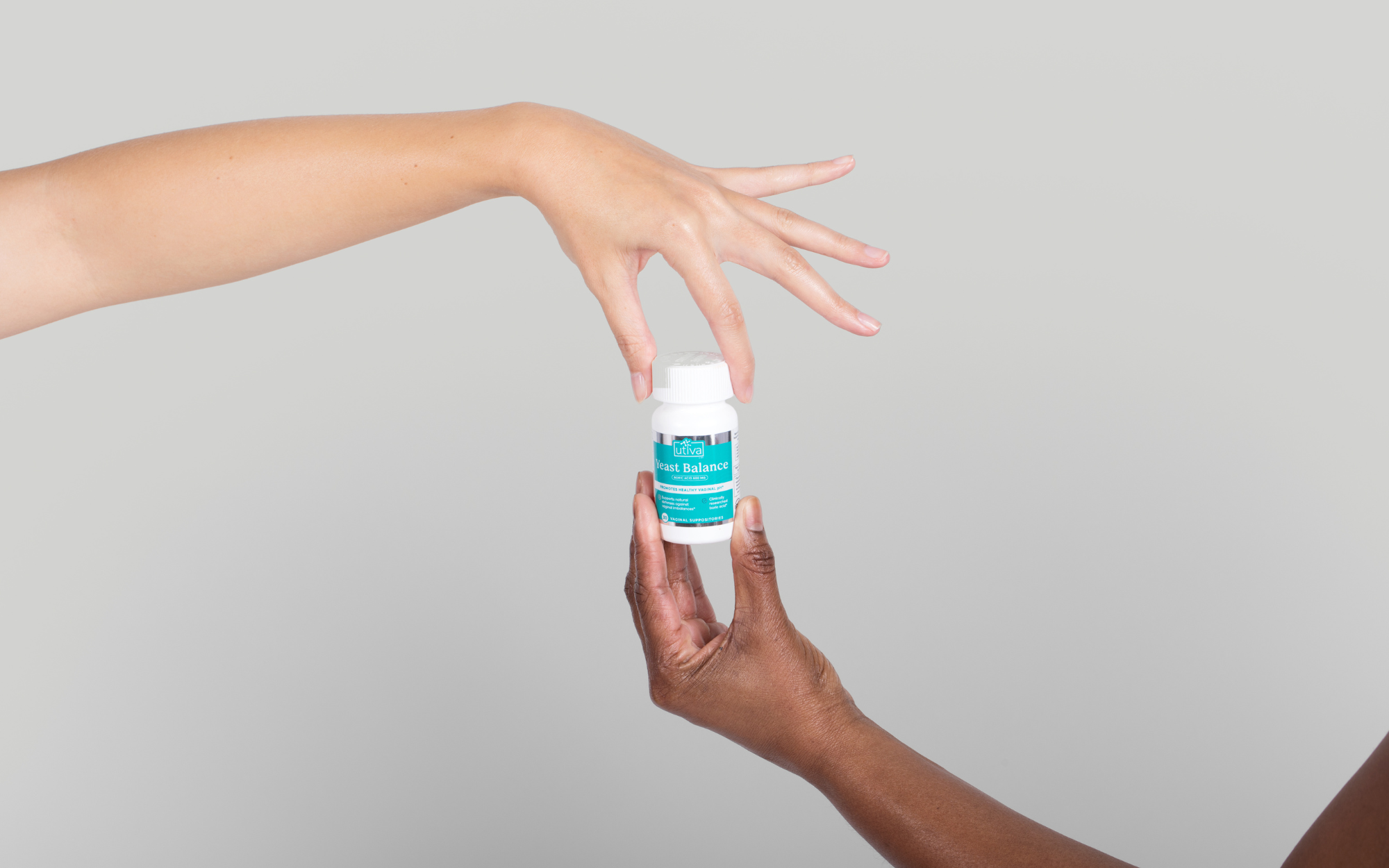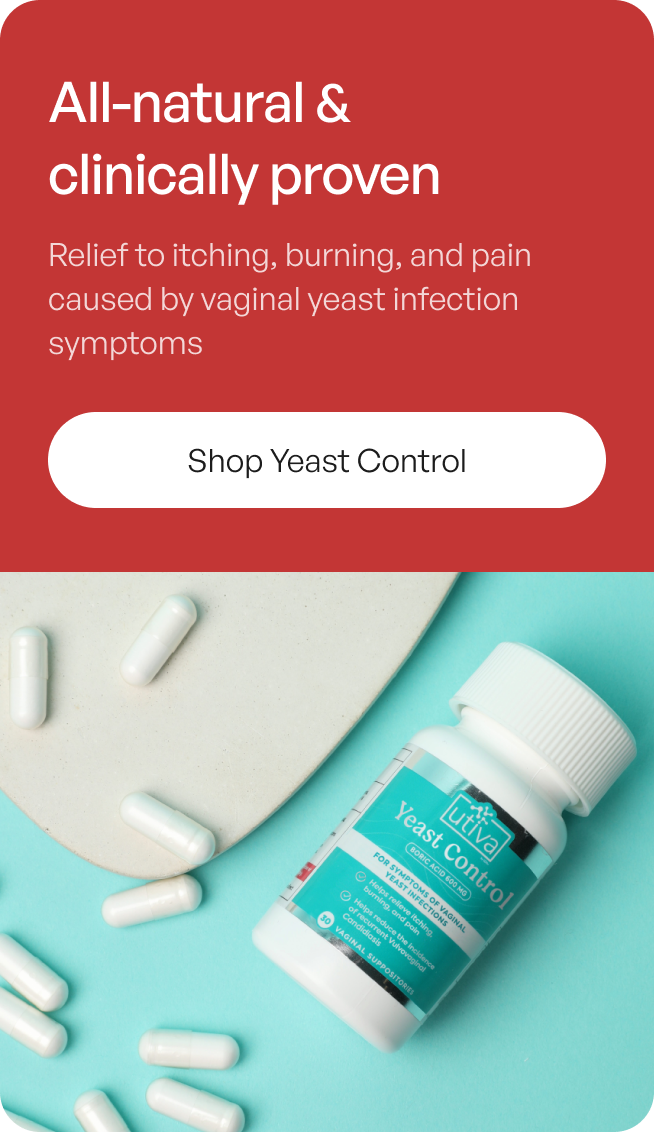Boric Acid for Yeast Infections: An All-Natural Way to Boost Vaginal Health

Pain during sex, strange thick discharge, an itchy you-know-what. It’s that familiar feeling of a yeast infection in progress. And we do mean familiar. 75% of all women will have a yeast infection in their lifetime and up to 45% will have more than one.
A vaginal yeast infection is typically caused by an overgrowth of a fungus called Candida. This causes your vagina to feel irritated, itchy, and sore. Many people notice white cottage cheese-like discharge and a burning sensation around the opening of the vagina.
Of all the medications and ointments that treat yeast infections, one natural solution stands out: boric acid. This powerful mineral is an all-natural antifungal that is becoming famous for its ability to balance the vaginal flora. But does it really work? How should you take it? And what is the best boric acid supplement to keep yeast infections away for good? All questions will be answered—starting now.
What is boric acid? What does boric acid do?
Boric acid is a mineral found naturally in soil, plants, and water. It’s known for its antiviral, antibacterial, and antifungal properties. Since yeast infections are caused by fungi overgrowth, boric acid has become an effective solution for treating yeast infections, balancing the vaginal pH, and improving vaginal health overall.
How does boric acid treat yeast infections?
A scientific review of 14 studies found that boric acid is an effective, safe, and affordable alternative for treating recurrent yeast infections. But how exactly does it work?
When boric acid enters the vagina, it makes the entire area more acidic. This balances the flora—AKA the hundreds of bacteria and microorganisms living in your vagina.
Boric acid also attacks fungi by disrupting oxidative metabolism in its cells. In other words, making it impossible for fungi to survive and grow. Yep—Candida included. Boric acid is even better at attacking fungi than traditional antifungal medications.
What are standard treatment options for treating yeast infections?
Beyond boric acid, there are many standard treatment options for yeast infections. Your doctor may suggest Azole antifungal medications, Miconazole (Monistat), oral fluconazole (Diflucan), Butoconazole (Gynazole-1), amphotericin B, or Brexafemme (Ibrexafungerp).
These drugs can be effective at curing your yeast infection, but not always. Candida is one tough fungus. It can stand its ground against certain medications—especially a new species of Candida called Candida auris.
About 90% of US Candida auris samples are resistant to fluconazole and up to one-third are resistant to the antifungal drug amphotericin B. To make matters worse, Candida auris spreads easily and is hard to identify through standard lab testing.
Standard yeast infection medications can also cause harsh side effects, like headache, nausea, skin irritation, or gastrointestinal issues.
Before starting treatment for yeast infections, always talk to your doctor about which option is best for you and your unique condition.
What is the most effective way to take boric acid?
The best way to take boric acid is to insert it directly into your vagina through a boric acid suppository.
How do you use boric acid suppositories?
We know, we know—the word suppository can feel a bit nerve-wracking. But boric acid suppositories are extremely safe and easy to use. Here’s how:
- Wash your hands thoroughly.
- The suppository can be inserted at any angle, but many people like to lie on their back with bent knees. Others find it helpful to stand with their feet a few inches apart and knees bent. Take your time finding the most comfortable position for you.
- Using your finger or an applicator, gently insert one suppository into your vagina as far as it can comfortably go. Then throw away the applicator, if you used one.
- Wash your hands again to seal the deal.
You might notice light discharge after you insert the suppository. Many women wear a panty liner just in case.
Pro tip: Try to insert the suppository at the same time every day. Set an alarm to remind yourself or pair the suppository with a consistent daily activity, like bedtime or breakfast. For best results, insert the suppository before bed and let it work its magic overnight.
Are there any side effects of boric acid suppositories?
Boric acid suppositories are considered generally safe. However, there is the potential for minimal side effects, such as vaginal pain, burning, redness, or watery discharge. With an occurrence rate of only 3-4%, these side effects are very unlikely—making boric acid safer than most standard yeast infection treatments.
That said, there are a few other instances to be aware of:
- Do not use boric acid suppositories if you’re pregnant or have an open wound inside your vagina.
- Boric acid suppositories are safe to use on your period, but avoid using a tampon for 1-2 days afterwards.
- Similarly, refrain from having vaginal sex for 1-2 days after taking boric acid.
- Do not take your boric acid supplement orally—it could cause some not fun gastrointestinal side effects, like nausea or diarrhea.
What are the best boric acid suppositories?
Utiva Yeast Balance is one of the most effective boric acid suppositories. It’s meticulously formulated to promote a healthy vaginal pH and relieve all those uncomfortable symptoms of yeast infection. Best of all, Utiva Yeast Balance specifically targets the common fungi that cause infections—including those pesky ones that are resistant to traditional antifungal drugs.
A safer, more natural solution for yeast infections.
There’s no nice way to put it—yeast infections suck. They’re unpleasant, painful, and far too common. That’s why it’s so important to stay educated on the many treatment options, from standard drugs to incredible natural treatments like boric acid and Utiva Yeast Balance.
Because your vagina deserves the best—and so do you.
REFERENCES USED:
https://www.healthline.com/health/womens-health/boric-acid-for-yeast-infection
https://pubmed.ncbi.nlm.nih.gov/21774671/
https://www.intimaterose.com/blogs/womens-health/how-to-use-boric-acid
https://www.cdc.gov/fungal/diseases/candidiasis/antifungal-resistant.htmlKnowledge is power
Sign up to our newsletter to keep learning!

- Choosing a selection results in a full page refresh.
- Opens in a new window.




